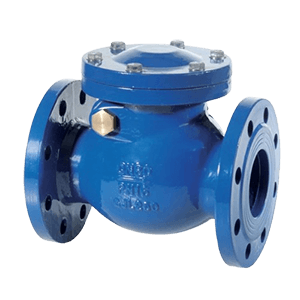If you work with pipelines, pumps, or marine systems, you’ve probably heard of a swing check valve. It’s one of those simple but essential components that keep fluid systems safe and efficient. But what exactly does it do, and why is it used so widely? Let’s take a closer look.
What Is a Swing Check Valve
A swing check valve is a type of non-return valve. That means it allows fluid to flow in only one direction. Inside the valve, there’s a hinged disc — or “flap” — that swings open when the fluid flows forward and closes when the flow stops or reverses. This swinging motion gives the valve its name.In short, it prevents backflow. That’s important in systems where reversed flow could damage equipment or contaminate clean fluid.
How Does It Work
The working principle is simple but effective. When fluid moves forward, pressure pushes the disc away from the seat, allowing free flow. When the flow slows down or reverses, gravity and reverse pressure swing the disc back onto the seat, closing the passage.
Because of this design, swing check valves are often used in pipelines that handle liquids like water, oil, or seawater. They don’t need external power or control — they operate automatically, responding to pressure and flow direction.
Where Are Swing Check Valves Used
Swing check valves are common in marine systems, water treatment plants, oil and gas pipelines, and HVAC installations. In marine applications, for example, they help prevent seawater from flowing backward into pumps or tanks.They’re also used in fire protection systems, irrigation lines, and industrial processes where fluid control and safety are priorities.
Advantages of Swing Check Valves
-
①Simple and reliable: Few moving parts mean fewer failures.
-
②Low pressure drop: The valve offers minimal resistance to forward flow.
-
③Automatic operation: It doesn’t need an actuator or manual control.
-
④Durable materials: Swing check valves can be made from stainless steel, cast iron, or bronze, depending on the medium and environment.
Things to Consider Before Using One
While swing check valves are sturdy, they aren’t perfect for every situation. They need a certain flow velocity to function properly. If the flow is too low or fluctuates often, the disc may “chatter,” causing noise or wear. They also require enough space for the disc to swing open fully, so they may not fit tight piping layouts.
Post time: Oct-17-2025

